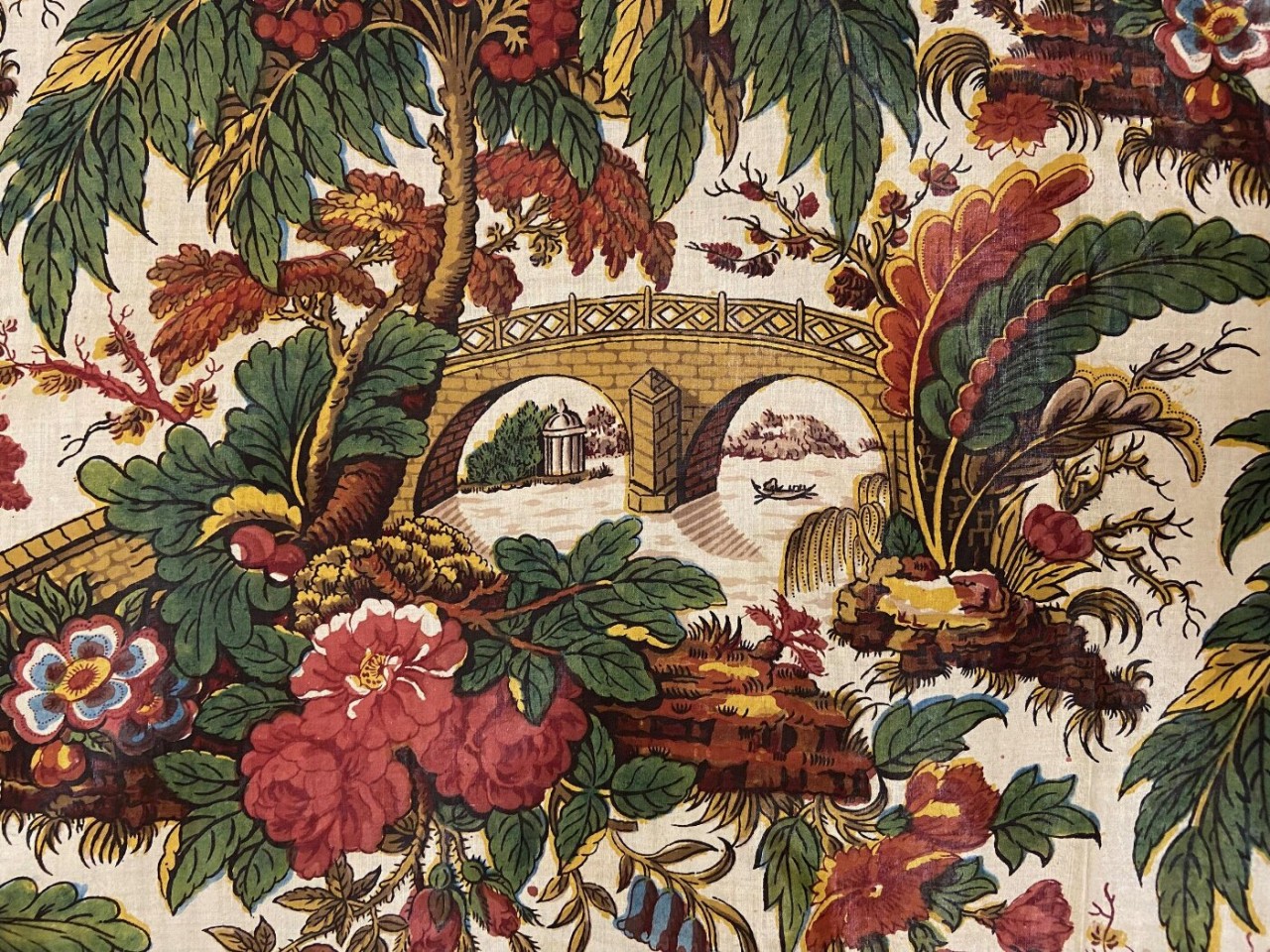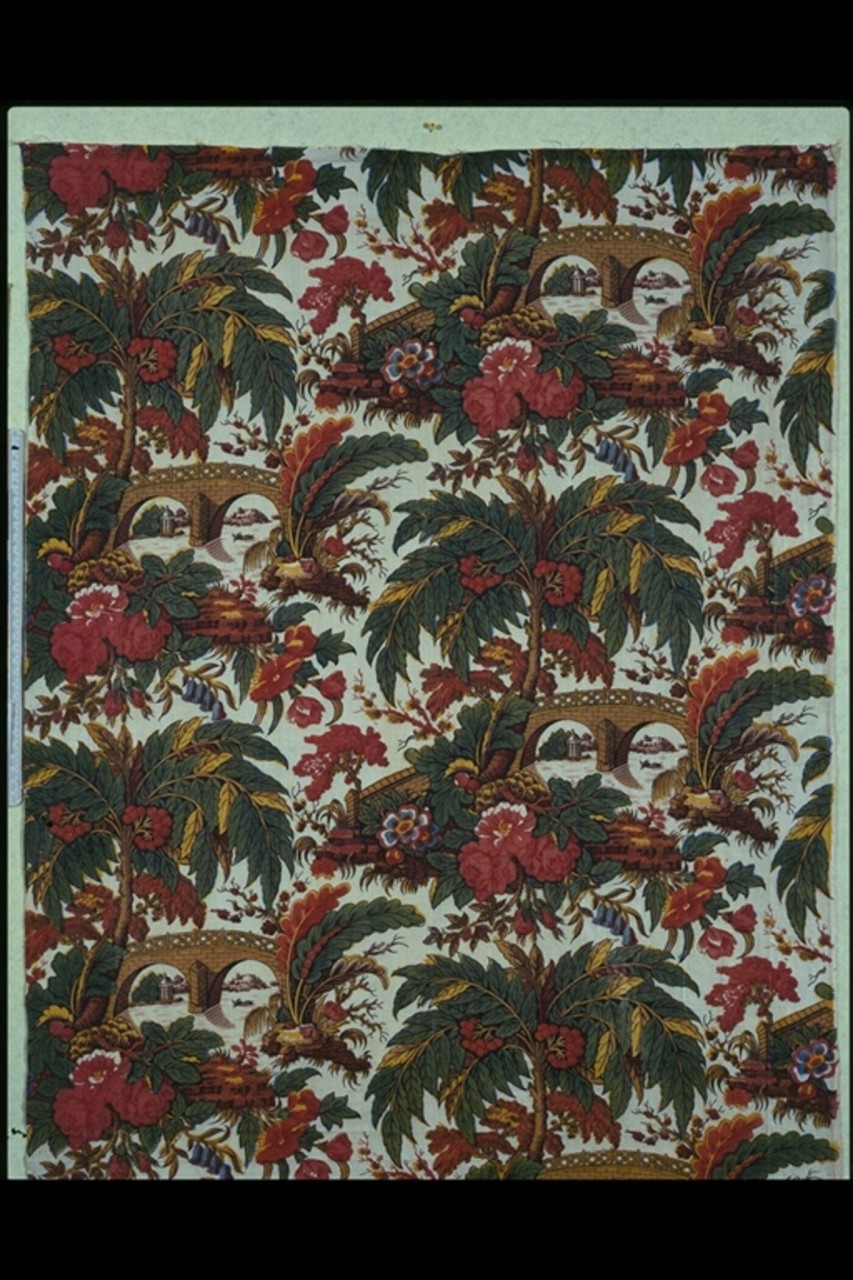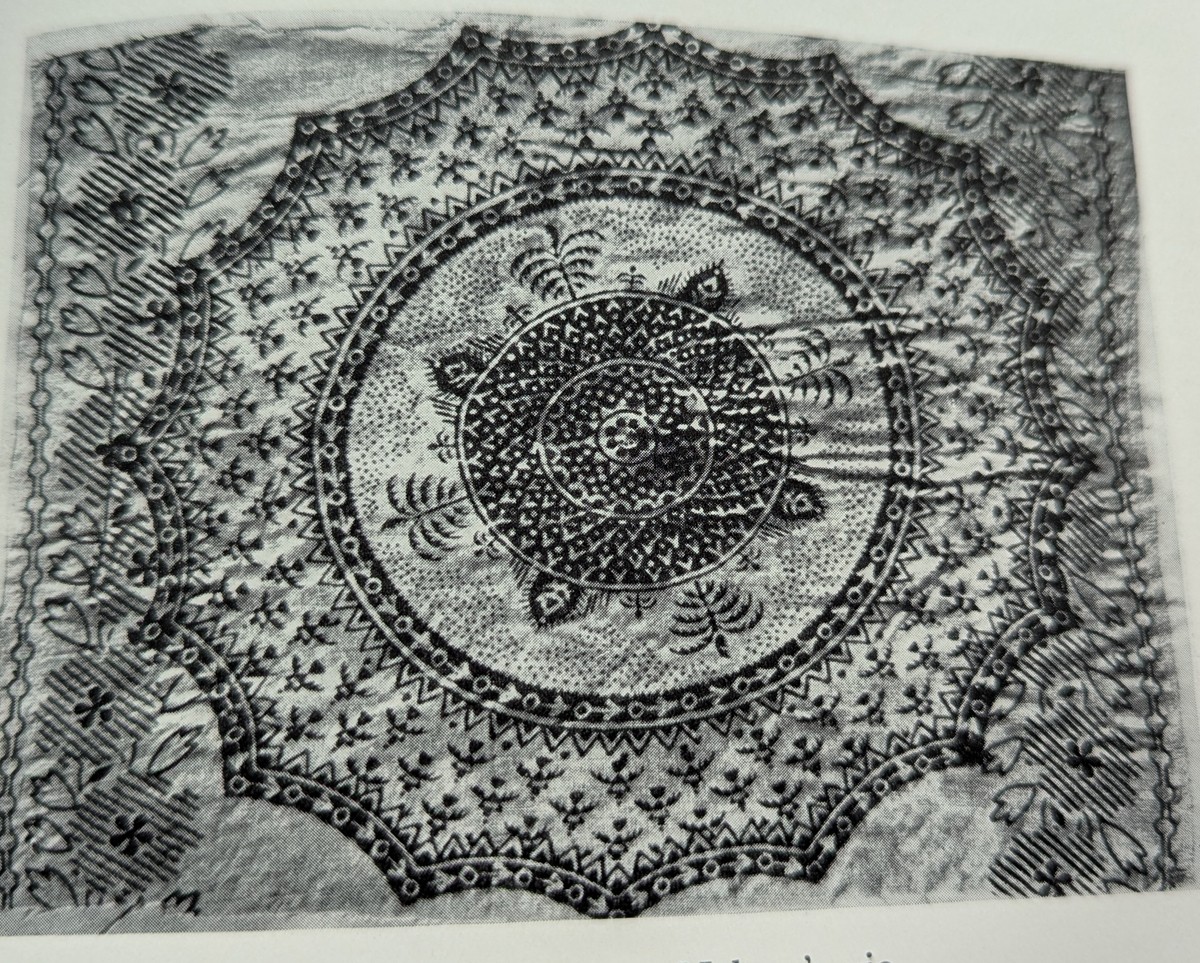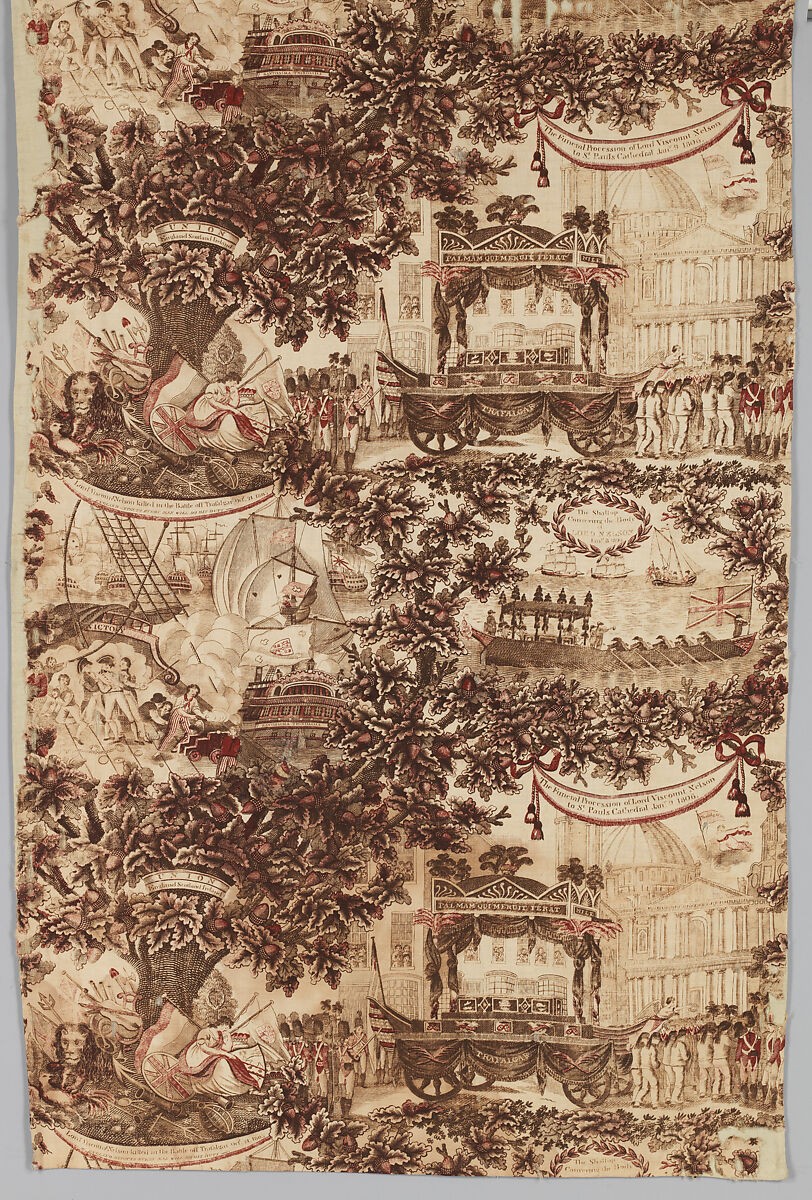Textiles and the Triplett Sisters
Medallion: Peel & Co Printers

Blackburn greys was a fabric of linen weft and cotton warp that was made in the Blackburn area of Lancashire, England and primarily made in the area by weavers at home. About 1750 Robert Peel living on Hole House Farm, near Blackburn invented a wooden roller system (wooden cylinder carved in relief) which was later known as a mule machine to print on fabric. Robert Peel would give up farming to focus on calico printing. Later one of his sons would introduce the engraved copper cylinder to their firm Peel & Co.

Sadly, in December 1791 their cotton works made the newspaper for a large fire. The company then called Peel, Aintworth, and Co. would recover, but needed additional capital. William Yates would provide the capital and thus the company would become known as Peel, Yates, and Co. In May 1798, the company would once again experience a fire, this time putting nearly 800 people out of employment. A few days later the company offered the British Government to form a regiment of 500 men for the protection of the country under the command of Jonathan Peel.

Given those circumstances it is not surprising to find the Peel print works created a medallion to celebrate the victory of Rear Admiral Horatio Nelson over the French navy at the Battle of the Nile. While more than 30 printed medallions from the period exist, very few have been traced to a specific printworks. The Peel Co. printworks would have additional challenges of thefts, and more fires, but continued to successfully print textiles for years to come. Examples of their fabrics printed on both linen and cotton are still in existence today.


